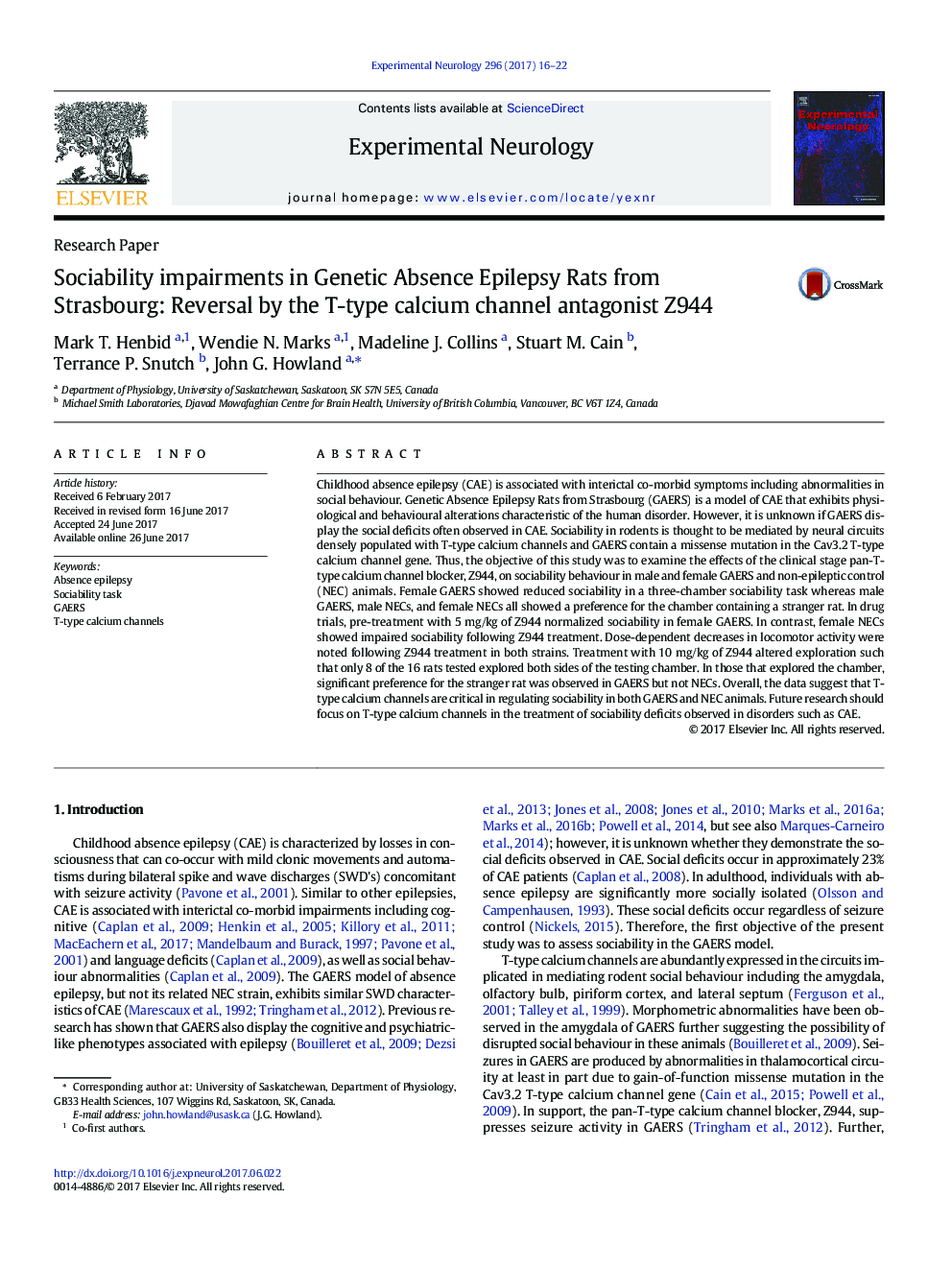| کد مقاله | کد نشریه | سال انتشار | مقاله انگلیسی | نسخه تمام متن |
|---|---|---|---|---|
| 5629131 | 1580143 | 2017 | 7 صفحه PDF | دانلود رایگان |

- Sociability was tested in a rat model of absence epilepsy.
- Sociability was impaired in female rats with absence seizures.
- The T-type calcium channel blocker Z944 reversed the sociability deficits.
- Z944 produced sociability deficits in female animals of the control strain.
Childhood absence epilepsy (CAE) is associated with interictal co-morbid symptoms including abnormalities in social behaviour. Genetic Absence Epilepsy Rats from Strasbourg (GAERS) is a model of CAE that exhibits physiological and behavioural alterations characteristic of the human disorder. However, it is unknown if GAERS display the social deficits often observed in CAE. Sociability in rodents is thought to be mediated by neural circuits densely populated with T-type calcium channels and GAERS contain a missense mutation in the Cav3.2 T-type calcium channel gene. Thus, the objective of this study was to examine the effects of the clinical stage pan-T-type calcium channel blocker, Z944, on sociability behaviour in male and female GAERS and non-epileptic control (NEC) animals. Female GAERS showed reduced sociability in a three-chamber sociability task whereas male GAERS, male NECs, and female NECs all showed a preference for the chamber containing a stranger rat. In drug trials, pre-treatment with 5Â mg/kg of Z944 normalized sociability in female GAERS. In contrast, female NECs showed impaired sociability following Z944 treatment. Dose-dependent decreases in locomotor activity were noted following Z944 treatment in both strains. Treatment with 10Â mg/kg of Z944 altered exploration such that only 8 of the 16 rats tested explored both sides of the testing chamber. In those that explored the chamber, significant preference for the stranger rat was observed in GAERS but not NECs. Overall, the data suggest that T-type calcium channels are critical in regulating sociability in both GAERS and NEC animals. Future research should focus on T-type calcium channels in the treatment of sociability deficits observed in disorders such as CAE.
Journal: Experimental Neurology - Volume 296, October 2017, Pages 16-22